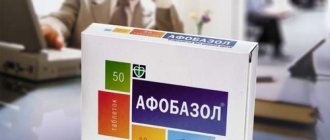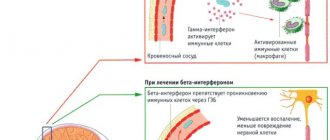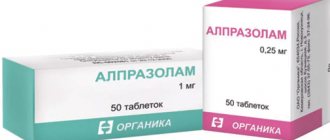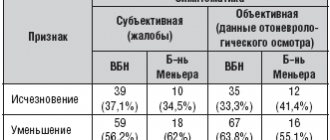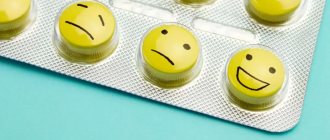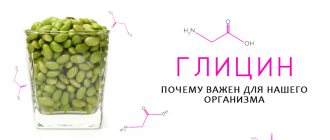Updated: 04/23/2021 15:13:42
Expert: Abramova Tsilya
Nootropic drugs quickly became fashionable. Students, freelancers and people engaged in mental work take pills to improve memory and increase performance. Quite effective and relatively harmless, nootropics have become very popular. But the evidence base for these drugs still does not exist. There is no reliable evidence that nootropics actually work and act as a “magic pill” for the brain.
Let us consider the effect of nootropic drugs using the example of two well-known drugs: Nootropil and Piracetam. The drugs have the same composition and indications for use, and differ only in the form of release and price. Read the article to see how significant this difference is.
What's inside: composition and form of release of drugs
Nootropil and Piracetam contain the same active ingredient. This is piracetam - a drug from the group of nootropics. Medicines in this category stimulate the activity of the nervous system: improve attention and memory, facilitate mental work.
Nootropic drugs differ in the form of release. Nootropil is presented on the pharmaceutical market in tablets and solution for injection. The same release forms are announced for Piracetam - but there are also capsules for oral administration.
Both drugs are available by prescription, but can be difficult to obtain. Piracetam and its derivatives are prohibited in Russia. They cannot be synthesized or sold, so they are not available in pharmacies. Previously, the cost of Piracetam was 100-150 rubles, Nootropil – 250-350 rubles.
Nootropil and Piracetam - which is better?
It is essentially difficult to answer this question, since user reviews of these medications are very mixed. It is difficult to objectively assess the effectiveness of drugs, since the active substance exhibits a mild pharmacological effect, which manifests itself gradually, since piracetam must first accumulate sufficiently in the tissues and brain. Also, the high activity of the drug remains for some long time even after the course of treatment, because the substance has accumulated sufficiently. The duration of treatment can last from 4 weeks to six months, depending on the indications and condition of the patient. If patients begin to immediately feel the effect of the drug, then this indicates a placebo effect.
The choice depends entirely on the individual, but it is better to rely on the doctor’s opinion. After all, some people like inexpensive domestic products, while others trust only foreign generics. It is worth noting that nootropil has a very convenient tablet form. One piece contains 800 or 1200 mg of active ingredient, which is why you need to take fewer tablets, because they are prescribed in grams. Capsules are available in 400 mg doses. The standard intramuscular and intravenous solution is 200 mg per 1 ml, and the drinking solution contains 200 or 330 ml of the product per 1 ml. The domestic product has the same release forms, with the exception of drinking. Tablets usually consist of 200 or 400 mg of medication, which is less convenient to use.
Brain doping: how nootropics work
Piracetam is a cyclic derivative of gamma-aminobutyric acid (GABA). This substance inhibits the activity of the nervous system. However, piracetam itself does not affect GABA receptors, that is, it cannot act as a brake. This is evidenced by clinical trials conducted by the developers of the drug back in the last century.
The mechanism of action of piracetam has not yet been studied. Scientists cannot figure out which receptors the drug affects and how exactly it activates the activity of the nervous system, while remaining a derivative of its main “brake” - GABA. In the scientific community, two versions have gained the most popularity:
- Piracetam affects AMPA receptors. These receptors speed up the conduction of nerve impulses and cause the brain to respond faster. Piracetam, interacting with receptors, activates their work.
- Piracetam binds to phospholipids on cell membranes. It increases the permeability of the cell wall and accelerates the conduction of nerve impulses. Clinical trials on mice showed that the drug increases neuroplasticity - the brain's ability to maintain old neural connections and create new ones. This property of the nervous system allows a person to successfully learn and remember information.
Scientists also say that piracetam increases the consumption of glucose by cells of the nervous system and thereby activates their work.
While taking the drug, the following is observed:
- improved attention;
- increasing the ability to remember information;
- acceleration of mental activity of the brain.
At the same time, piracetam does not have a sedative or psychostimulating effect, which allows it to be used during active activities - during study or work.
Clinical studies have shown that piracetam has a beneficial effect on the cardiovascular system. It reduces platelet aggregation, reduces blood viscosity and prevents vasospasm. While taking the drug, blood supply to the brain improves. This effect is used in the treatment of some neurological diseases.
Nootropil
Nootropil (active ingredient - piracetam) is a nootropic drug that is a derivative of gamma-aminobutyric acid. Nootropil can be called a reference nootropic without any exaggeration. The mechanism of its action is associated with influencing the course of metabolic and bioenergetic processes in neurons, accelerating the turnover of information molecules and stimulating protein synthesis. The effect of piracetam on oxygen utilization and glucose metabolism is determined by the conditions in which the drug acts - aerobic or anaerobic. In the first case, nootropil increases oxygen consumption and the breakdown of glucose by an average of 30%. In conditions of oxygen deficiency, the drug stimulates glycolysis due to the activation of the pentose phosphate pathway, which results in the formation of one of the main energy sources for metabolism in the brain - NADPH. In addition, under anaerobic conditions, nootropil increases ATP synthesis. At the cellular level, the drug interacts with polar groups of phospholipids, forming mobile complexes. This ensures the restoration of the two-layer structure of the cell membrane and maintains its stability. Nootropil facilitates various types of synaptic transmission, affecting mainly the activity and density of receptors on postsynaptic membranes (data were obtained during preclinical studies). Nootropil improves cognitive functions such as memory, attention, thinking, without having a psychostimulating (or, on the contrary, sedative) effect. Nootropil also affects the rheological properties of blood: in patients suffering from sickle cell anemia, the drug increases the ability of erythrocyte membranes to deform, thins the blood and prevents the formation of unstable erythrocyte aggregates - the so-called. “coin columns” characteristic of polyglobulia. In addition, nootropil reduces platelet aggregation (sticking together) without increasing/decreasing the number of the latter. In preclinical trials, it was found that the drug prevents vascular spasms and counteracts the substances that cause them.
In clinical studies, nootropil prevented the adhesion of red blood cells to the vascular endothelium and stimulated the secretion of prostacyclins.
After oral administration, nootropil is quickly and completely absorbed from the gastrointestinal tract. After taking 3.2 g of the drug, the maximum concentration of the active substance in the blood plasma is achieved after 1 hour. A hearty snack slows down this process by an average of 20%. The half-life of nootropil is 4-5 hours (from blood plasma) and 8.5 hours (from cerebrospinal fluid). The route of administration of the drug into the body does not affect the half-life. Nootropil is excreted from the body unchanged by the kidneys. Renal failure increases the half-life of the drug; liver failure does not affect this indicator.
Nootropil is available in four dosage forms: tablets, capsules, solution for intravenous and intramuscular administration, and solution for oral administration. The dose is calculated based on the patient's body weight. Oral forms of nootropil should be taken on an empty stomach or with food. Nootropil should be taken by patients with obvious hemostasis disorders, large-scale surgical interventions, severe bleeding, and renal failure under close and constant medical supervision. If a patient experiences sleep disturbances while taking nootropil, it is recommended to stop taking the drug in the evening and combine it with daytime use.
Nootropil is a “friendly” drug in relation to other drugs, however, it can also enter into some unwanted interactions. Thus, when it is combined with thyroid hormones, central effects may appear: somnological disturbances, irritability, anxiety, tremor, confusion. When nootropil is combined with central nervous system stimulants, potentiation of the effects of the latter may be observed. And finally, when taking antipsychotics together with nootropil, the risk of extrapyramidal disorders increases.
Evidence base: assessing the effectiveness of drugs
The effectiveness of piracetam and its derivatives has not been confirmed by clinical trials. Proponents of evidence-based medicine say that nootropics do not work, and their effect is comparable to placebo. Here's how they justify their statements:
- A review of scientific studies shows that most articles talking about the benefits of piracetam are questionable. Small sample, low level of evidence - that's what sets them apart. In modern medical literature, the results of previous studies are called into question.
- The results of the study with piracetam for ischemic stroke are disappointing. The authors indicate that the drug does not affect the outcome of the disease and recommend new trials.
- More recent work shows the effects of piracetam, but many scientists disagree with the results of the study. They suggest that the findings can be explained by random factors.
- There are other articles in the medical literature. They talk about the benefits of piracetam for dyslexia and aphasia in children, myocolonic epilepsy in adults. A lot of research has been carried out, but their results contradict each other. Therefore, let's turn to one of the most reliable sources - the Cochrane Library:
- A 2001 review found that piracetam helps treat aphasia (speech impairment) after a stroke. However, there is no reliable evidence that taking medications is more effective than prescribing special exercises for speech development.
- A 2004 review examined the effects of piracetam on memory and other intellectual functions. The benefit of the drug has not been proven.
- A 2012 review focused on the use of piracetam for ischemic stroke. The authors found no evidence of the drug's effectiveness.
- In another 2012 review, scientists examined the effects of piracetam on the nervous system of newborns. Previously, it was believed that nootropics eliminate the effects of hypoxia suffered in utero and during childbirth. Further studies did not confirm the effectiveness of the drug.
- Reviews from people who have taken nootropics show that in many situations such drugs work. However, the placebo effect cannot be ruled out: perhaps we are just talking about self-hypnosis. So far, randomized clinical trials have not confirmed the effectiveness of piracetam.
In the context of evidence-based medicine, comparing Nootropil and Piracetam makes no sense. If the effect of both drugs is indistinguishable from placebo, then it is impossible to determine which of the two drugs is better.
Piracetam and piracetam-like drugs: the view of a clinical pharmacologist
Currently, there are more than 10 “piracetam-like” drugs, including piracetam itself, which are used in various countries around the world or are at one or another stage of clinical trials. These include: • piracetam, levetiracetam, seletracetam and brivaracetam (developed by UCB Pharma, Belgium); • oxiracetam (developed by ISF, Italy); • aniracetam (developed by Roche Pharmaceuticals, Switzerland); • pramiracetam (developed by Warner-Lambert, USA) [6]; • phenylpiracetam (developed at the Institute of Medical and Biological Problems of the Russian Academy of Medical Sciences, produced by Valenta Pharmaceuticals, Russia). All of these drugs have a chemical structure similar to piracetam, the main component of which is the pyrrolidone ring, and therefore this group is called “racetams” (Fig. 1). Despite the structural similarity, the clinical effects observed with the use of racetams are quite diverse and allow us to divide them into 3 subgroups: 1. Drugs primarily used to treat cognitive impairment. This subgroup includes piracetam, pramiracetam, phenylpiracetam, oxiracetam and aniracetam (the latter two drugs are no longer used in clinical practice). It should be noted that drugs in this group can also be used for balance disorders, cortical myoclonus and dyslexia. 2. Drugs for the treatment of epilepsy. This subgroup includes levetiracetam, brivaracetam and seletracetam. The effect of these drugs on cognitive function is unclear. 3. The third subgroup includes drugs whose clinical effectiveness is unknown. These drugs include nefiracetam (which has not been shown to improve cognitive function in stroke patients) and rolipram (currently being studied as an antidepressant). This subgroup also includes a number of other drugs that are at the stage of clinical trials. Thus, we can say that piracetam and piracetam-like drugs (drugs) (let’s call them piracetam analogues) have found their use in a fairly wide range of neurological diseases [1], which is based on the results of clinical studies with different designs (both open uncontrolled and double-blind, placebo-controlled). These drugs have been actively studied over the past three decades, resulting in a significant number of publications. Of more than 10 new piracetam-like drugs, 8 have undergone clinical trials for various CNS indications in recent years. When searching the Internet using the US National Library of Medicine PubMed database [2] using the keywords “clinical trial” and “international nonproprietary name of the drug” (piracetam or the international nonproprietary name of the “piracetam-like” drug), more than 300 publications were found. Table 1 shows the dynamics of publications on clinical trials of piracetam and piracetam-like drugs over four time periods: 2007–2010, 2004–2006, 1999–2003. and until 1999. Two articles are meta-analyses: one is the clinical effectiveness of piracetam in cognitive disorders [3], the other is a meta-analysis of the effectiveness of piracetam and piracetam-like drugs in experimental strokes in animals [4]. This review analyzes the results of experimental and clinical studies of piracetam and piracetam-like drugs belonging to the first subgroup of drugs that studied the effectiveness of piracetam in the treatment of cognitive impairment. Mechanisms of action of piracetam It should be noted that the pharmacology of piracetam-like drugs is much less studied than their clinical use [5]. These compounds modulate the processes of excitation and/or inhibition of neurotransmitters, neurohormones and/or postsynaptic signals. These effects of piracetam and piracetam-like drugs can manifest themselves in the form of an effect on cognitive and mnestic functions [5]. Based on the results of several experimental studies, it has been suggested that piracetam plays an important role in energy metabolism, including increasing brain oxygenation and the permeability of cellular and mitochondrial membranes to Krebs cycle mediators [7,8], increasing the synthesis of cytochrome b5 [9 ]. The similarity of the chemical structure of piracetam to GABA suggests that piracetam is likely to have GABAergic effects [10]. Other researchers suggest that piracetam “works” as an antioxidant/neurotonic [11,12] and increases acetylcholine receptor density [13]. The number of such hypotheses, each of which quite convincingly describes one or another aspect of the mechanism of action of piracetam, is quite large; however, in order to form a unified concept, additional research on the drug is required. Due to the differences between piracetam and piracetam-like drugs, it is unlikely that all of these drugs will act in the same way, affecting the same target molecules. A number of hypotheses focus on the modulation by piracetam of the function of ion channels (sodium, potassium, calcium) in the neuronal membranes of neurons or neuromuscular synapses. Thus, it has been established that piracetam, oxiracetam and aniracetam activate the AMPA type of glutamate receptors (the endogenous ligand is amino-3-hydroxy-5-methylisoxazole-4-propionate), but do not affect the NMDA receptors of neurons. This leads to an increase in the release of calcium from the cell [14], resulting in a decrease in the concentration of intracellular calcium. Pramiracetam increases the rate of sodium-dependent choline uptake in the hippocampus in rats. Its effect on cognitive function may occur through acceleration of the flow of impulses from cholinergic neurons in the hippocampal septum [15]. The experiment established that phenylpiracetam has an affinity for H-cholinergic receptors, but not for NMDA-type glutamate receptors. However, injections of this drug (100 mg/kg, intraperitoneal) increase the number of both H-cholinergic and NMDA receptors in rats, but reduce the number of serotonin and dopamine receptors in brain tissue [16]. Unlike other piracetam-like drugs, levetiracetam has pronounced anticonvulsant activity, and therefore is used to treat patients suffering from epilepsy. Its mechanism of action has not been fully studied, but we can say that the drug does not directly affect such “classical” processes/targets for antiepileptic drugs as GABAergic transmission and sodium channels. The most likely site of application of levetiracetam is the SV2A protein. It is assumed that this protein is involved in the processes of exocytosis and, due to its structural similarity to membrane transporters, may play a role in maintaining synaptic homeostasis, in particular, components such as ATP and calcium. The effect on calcium homeostasis is confirmed by the data that SV2A interacts with synaptotagmin, which is a kind of calcium sensor of the cell, as well as by the inhibition under the influence of levetiracetam of calcium release by PC-12 cells, which contain SV2A, and the absence of such an effect in 3T3 fibroblasts, where no SV2A [52]. There is also evidence that, in a therapeutic dose range, levetiracetam reduces ion fluxes into neurons induced by activation of AMPA receptors [19]. This may be due to inhibition of calcium channels [17–19]. Levetiracetam and nefiracetam activate NMDA receptors. In cultured rat cortical neurons, this effect was mediated through activation of protein kinase C and phosphorylation of one of the NMDA receptor subunits. This, in turn, increases the binding of glycine to the NMDA receptor [20]. Fasoracetam modulates glutamate receptors, which leads to activation of adenylate cyclase and increased formation of cyclic adenosine monophosphate (cAMP), which is involved in various “signaling” processes, incl. such as learning and memory. The mechanism of action of colurocetam has been described in different ways. Most authors indicate that colurocetam affects choline transport [21], which leads to increased choline uptake in hippocampal synaptosomes [22]. It should be noted that the relationships between these various complex processes are very difficult to analyze. Clinical use of piracetam Piracetam was first registered in Europe in the early 1970s. It does not belong to potent drugs and drugs with a narrow therapeutic index, therefore, in experiments it is characterized by low toxicity, and in clinical settings by low frequency and mild severity of adverse reactions, such as anxiety, insomnia or drowsiness and agitation [3,5, 23]. Treatment of Cognitive Impairment Although the first reported effect of piracetam on the central nervous system was the suppression of nystagmus in the rabbit, further findings over the past 25 years have shown that the main effect of piracetam is to improve cognitive function. The earliest studies focused on pharmacological modulation of cerebral shock-induced amnesia. Giurgea and Mouravieff Lesuisse demonstrated that piracetam reduced the effect of electric shock on disorientation in rats in a water maze. Similar effects of piracetam and drugs similar to it in chemical structure have been described by many other authors. Studies of piracetam and aniracetam by Cumin et al., studies of piracetam and oxiracetam by Mondadori et al., and studies of etiracetam by Sara et al. showed significant protective effects against electrical shock. Buler et al. also described the antiamnestic effects of a whole series of piracetam analogues, including pramiracetam. The direct positive effect of nootropics on learning and memory has been repeatedly described [29]. Over the past 10 years, more than 20 review articles have been published with the results of clinical studies of piracetam confirming its clinical effectiveness (Table 2). In a study involving 162 patients who were diagnosed with age-related memory impairment, three groups of patients were formed. Patients of the first group received piracetam at a dose of 2.4 g/day, the second - 4.8 g/day, patients of the third group received placebo. The duration of the study was three months. All patients included in the study participated in a memory training program. The best results in tests for immediate (p<0.0004), general (p<0.002) and delayed (p<0.04) recall were achieved in the group of patients who took piracetam at a dose of 4.8 g/day. In the group of patients taking piracetam at a dose of 2.4 mg/day, a significant improvement compared with placebo was observed in immediate recall tests (p < 0.03) [30]. The therapeutic effect of piracetam in dementia is limited by the pathology underlying the disease. However, a number of studies have shown that piracetam can slightly improve the cognitive status of such patients [32]. A study of 130 patients diagnosed with mild to moderate dementia compared the effect of piracetam at a dose of 4.8 g/day with placebo. At the end of the 12-week treatment period, the piracetam group showed a significant improvement compared with the placebo group (p<0.001). Long-term treatment with piracetam may also slow the development of cognitive impairment. Thus, according to the results of a one-year double-blind study on patients diagnosed with probable Alzheimer's disease, in the group of patients taking piracetam, deterioration in cognitive function was observed in only one of the 14 scales used. At the same time, in the group of patients taking placebo, deterioration of cognitive functions was observed on 9 scales [33]. Of course, the number of patients participating in the studies described above is too small to draw valid conclusions about the effectiveness of piracetam, so two meta-analyses were conducted that examined the effectiveness of piracetam in elderly patients with age-related cognitive decline. Both meta-analyses used clinical global impression (CGI) scores from different studies. PCS is an important measurement tool that helps determine the clinical significance of any reported improvement. In addition, this scale is recommended for use as part of any clinical trial in patients with Alzheimer's disease. This scale is not sensitive to small changes in the patient's condition, which may not be clinically significant. Any change recorded using this scale is, by definition, clinically significant [32]. A smaller meta-analysis examined data from 6 randomized placebo-controlled trials involving 477 patients with vascular dementia, unclassified dementia, Alzheimer's disease, or cognitive impairment not meeting criteria for dementia. The ratio of patients who improved to those who did not was 3.47 (95% confidence interval) or 3.55, depending on whether a fixed- or random-effects model was used [34]. The second meta-analysis examined the effectiveness of piracetam for PCS in a larger number of studies and in a larger number of patients. It included both published and unpublished studies on piracetam. The number of studies was 19, the number of patients included was 1500. All studies were double-blind, parallel groups, placebo-controlled. They were carried out from 1972 to 1993. The studies involved patients 50 years of age and older with diagnoses of age-related cognitive impairment and degenerative dementia. The duration of the studies ranged from 6 to 52 weeks, piracetam was prescribed in doses from 2.4 to 8 g/day. This meta-analysis showed that improvement in the PCS was observed in more than 60% of patients taking piracetam, and only 30% of those taking placebo. The consequence of this is that the ratio of patients who showed improvement to those who did not show a change was favorable for piracetam, which was 2.45 (95% confidence interval) or 3.35 (95% confidence interval) depending on the statistical method used [3]. The meta-analysis data is consistent with the data obtained by Flicker and Grimley Evans, but is more accurate because smaller confidence intervals are used). Use of piracetam-like drugs in the Oxiracetam clinic. Due to the hydroxyl groups in the oxypyrrolidone core, oxiracetam has a favorable pharmacokinetic profile - high oral bioavailability [37]. In a prospective, double-blind study in 12 healthy volunteers, oxypiracetam attenuated the decline in neuropsychological performance (eg, semantic memory, reading) induced by scopolamine [38]. There is evidence that the use of oxiracetam for 2–6 months in people over the age of 65 years improves some cognitive impairment of non-specific etiology [39]. However, oxiracetam failed to benefit patients with Alzheimer's disease (albeit, the duration of treatment was only 1 month) [40]. The recommendations of the International Anti-Aging Systems (UK) indicate that oxiracetam can be used for “memory disorders caused by cerebrovascular insufficiency, mental impairment in old age,” but there is no such information from the manufacturer yet [5]. Pramiracetam. Replacing the amide group in the structure of piracetam with dipropane-2-ulaminoethyl also allows pramiracetam to have high bioavailability [41,42]. However, it is more active than piracetam and is therefore used in lower doses compared to piracetam [43]. Italian researchers demonstrated a reduction in the scopolamine-induced amnesic effect in healthy volunteers when treated with pramiracetam, that is, two out of five cognitive measures (including immediate and delayed verbal tests) were approximately 50% better than those receiving placebo [44]. . Two small studies were conducted in Ukraine: one in patients with cerebrovascular disease [45] and the other in patients with concussion [46]. The first study showed that visual and verbal memory improved modestly with pramiracetam in younger patients with chronic cerebrovascular and post-stroke cognitive symptoms and to a lesser extent in older patients. Aniracetam. Due to changes in the N-side chain derivative, aniracetam has low bioavailability and is rapidly eliminated [47]. In another small study in elderly patients with cerebrovascular disease, aniracetam was effective [48]. However, animations are not effective in patients with memory impairment, cognitive functions associated with chronic toxic effects of organic solvents [49]. Phenylpiracetam. Like piracetams, this drug has high bioavailability, however, data on pharmacokinetics were obtained on laboratory animals [50.51], the pharmacokinetic parameters in humans are not published. Phenylpiracetams reduces the severity of headache and general fatigue after 14 days of therapy in patients with cognitive disorders and/or depression after the CMT, with encephalopathies of various etiology [53, 54]. It has a favorable effect in patients with CVB [55], reduces the manifestations of asthenia and depression in patients with RS [56], chronic fatigue syndrome [57], in adolescents with asthenic syndrome [58]. Adding to anticonvulsants reduces the amount and frequency of seizures, slightly improves cognitive functions [59, 60]. Perhaps the drug reduces the titer of antibodies to myelin in cerebral stroke [61], but this is not confirmed in all studies [62]. In 80% of patients with an open -angle form of glaucoma after normalizing eye pressure, the drug contributed to the stabilization of the disease [63]. It is also recommended to astronauts to increase physical and mental performance, stimulate cognitive functions [6]. Nevertheless, to draw conclusions about the effectiveness of phenylpiracetam prematurely, since there are no large prospective placebo -controlled studies. The conclusion of the results of experimental and clinical studies accumulated to date allow us to say that it is necessary to deeply study the effectiveness and safety of piracetam and piracetam -like drugs. It seems that the effectiveness of these drugs according to most indications seems promising. Therefore, there is a need for better, large controlled clinical studies. It should also be noted that the neuroprotective effects of piracetam and piracetam -like drugs are practically not studied. Unlike most GABA --ergic preparations (for example, barbiturates, carbamazepine), which can cause pronounced NPR, including amnesia, piracetam and piracetam -like drugs are relatively safe. However, we can say that delayed effects of these drugs and potential risks associated with their use have not yet been identified. The mechanisms of action of piracetam and piracetam -like drugs are also not studied and require further clarifications. But the prospects of the use of piracetam in clinical practice are not in doubt.
References 1. Piracetam [online]. Available from URL: https://www.piracetam.com 2. US National Institutes of Health. ClinicalTrials.gov [online]. Available from URL: https://www.clinicaltrials.gov 3. Waegemans T, Wilsher CR, Danniau A, et al. Clinical efficacy of piracetam in cognitive impairment: a metaanalysis. Dement Geriatr Cogn Disord 2002; 13 (4): 217–24 4. Wheble PC, Sena ES, Macleod MR. A systematic review and meta-analysis of the efficacy of piracetam and piracetam-like compounds in experimental stroke. Cerebrovasc Dis 2008; 25 (1–2): 5–11. 5. Malykh AG, Sadaie MR. Piracetam and piracetam-like drugs: from basic science to novel clinical applications to CNS disorders. Drugs. 2010 Feb 12;70(3):287–312. 6. Information letter of the Institute of Medical Biological Problems of the Russian Academy of Medical Sciences.URL: https://www.phenotropil.ru/img/articles/popup_01264.html 7. Nickolson VJ, Wolthuis OL. Effect of the acquisition enhancing drug piracetam on rat cerebral energy metabolism: comparison with naftidrofuryl and methamphetamine. Biochem Pharmacol 1976 Oct 15; 25 (20): 2241–4. 8. Grau M, Montero JL, Balasch J. Effect of Piracetam on electrocorticogram and local cerebral glucose utilization in the rat. Gen Pharmacol 1987; 18 (2): 205–11. 9. Tacconi MT, Wurtman RJ. Piracetam: physiological disposition and mechanism of action. Adv Neurol 1986; 43: 675–85. 10. Wischer S, Paulus W, Sommer M, et al. Piracetam affects facilitatory I–wave interaction in the human motor cortex. Clin Neurophysiol 2001 Feb; 112(2):275–9. 11. Horvath B, Marton Z, Halmosi R, et al. In vitro antioxidant properties of pentoxifylline, piracetam, and vinpocetine.Clin Neuropharmacol 2002 Jan–Feb; 25 (1): 37–42. 12. Pepeu G, Spignoli G. Nootropic drugs and brain cholinergic mechanisms. Prog Neuropsychopharmacol Biol Psychiatry 1989; 13 Suppl.: S77–8. 13. Pilch H, MuЁller WE. Piracetam elevates muscarinic cholinergic receptor density in the frontal cortex of aged but not of young mice. Psychopharmacology (Berl) 1988; 94(1):74–8. 14. Copani A, Genazzani AA, Aleppo G, et al. Nootropic drugs positively modulate alpha–amino–3–hydroxy–5–methyl–4–isoxazolepropionic acid–sensitive glutamate receptors in neuronal cultures. J Neurochem 1992 Apr; 58(4):1199–204. 15. Pugsley TA, Shih Y–H, Coughenour L, et al. Some neurochemical properties of pramiracetam (CI-879), a new cognition–enhancing agent. Drug Dev Res 1983; 3: 407–20. 16. Kovalev G.I., Akhapkina V.I., Abaimov D.A. and others. Phenotropil as a receptor modulator of synaptic neurotransmission. Nervous diseases. 2007; 4:22–6. 17. Carunchio I, Pieri M, Ciotti MT, et al. Modulation of AMPA receptors in cultured cortical neurons induced by the antiepileptic drug levetiracetam. Epilepsy 2007 Apr; 48 (4): 654–62. 18. Lukyanetz EA, Shkryl VM, Kostyuk PG. Selective blockade of N–type calcium channels by levetiracetam. Epilepsy 2002 Jan; 43(1):9–18. 19. Pisani A, Bonsi P, Martella G, et al. Intracellular calcium increase in epileptiform activity: modulation by levetiracetam and lamotrigine. Epilepsy 2004 Jul; 45 (7): 719–28. 20. Moriguchi S, Shioda N, Maejima H, et al. Nefiracetam potentiates N–methyl–D–aspartate (NMDA) receptor function via protein kinase C activation and reduces magnesium block of NMDA receptor. Mol Pharmacol 2007 Feb; 71(2):580–7. 21. Takashina K, Bessho T, Mori R, et al. MKC–231, a choline uptake enhancer: (3) mode of action of MKC–231 in the enhancement of high–affinity choline uptake. J Neural Transm 2008 Jul; 115(7):1037–46. 22. Takashina K, Bessho T, Mori R, et al. MKC–231, a choline uptake enhancer: (2) effect on synthesis and release of acetylcholine in AF64A–treated rats. J Neural Transm 2008 Jul; 115(7):1027–35. 23. Fedi M, Reutens D, Dubeau F, et al. Long-term efficacy and safety of piracetam in the treatment of progressive myoclonus epilepsy. Arch Neurol 2001 May; 58(5):781–6. 24. Uebelhack R, Vohs K, Zytowski M, et al. Effect of piracetam on cognitive performance in patients undergoing bypass surgery. Pharmacopsychiatry 2003 May; 36(3):89–93. 25. Holinski S, Claus B, Alaaraj N, et al. Cerebroprotective effect of piracetam in patients undergoing coronary bypass burgery. Med Sci Monit 2008 Nov; 14(11):PI53–7. 26. Szalma I, Kiss A, Kardos L, et al. Piracetam prevents cognitive decline in coronary artery bypass: a randomized trial versus placebo. Ann Thorac Surg 2006 Oct; 82(4):1430–5. 27. Batysheva TT, Bagir LV, Kostenko EV, et al. Experience of the out–patient use of memotropil in the treatment of cognitive disorders in patients with chronic progressive cerebrovascular disorders. Neurosci Behav Physiol 2009 Feb; 39 (2): 193–7. 28. Zavadenko NN, Guzilova LS. Sequelae of closed craniocerebral trauma and the efficacy of piracetam in its treatment in adolescents. Neurosci Behav Physiol 2009 May; 39 (4): 323–8. 29. C.Mondadore “The pharmacology of the nootropics; new insights and new questions” Behavioral Brain Research, 59 (1993) 1–9. 30. Israel L., Melac M., Milinkevich D., Dubos G. “Drug therapy and memory training programs: A double–blind randomized trial of general practice patients with age–associated memory impairment”; International Psychogeriatrics 1994, 6:155–170. 31. Jelic V, Kivipelto M, Winblad B. Clinical trials in mild cognitive impairment: lessons for the future. J Neurol Neurosurg Psychiatry 2006 Apr; 77 (4): 429–38. 32. B. Winblad “Piracetam: a review of pharmacological properties and clinical uses”; CNS Drug Reviews, Vol 11, No.2, pp. 169–182, 2005. 33. Croisile B, Trillet M, Fondarai J., Laurent B., Mauguiere F., Billardon M. “Long-term and high dose treatment of Alzheimer's disease”; Neurology 1993; 43:301–305. 34. Flicker L., Grimley Evans J. Piracetam for dementia or cognitive impairment (Cochrane review). In: The Cochrane Library, Issue 1, 2001. Oxford: Update software. 35. Neznamov GG, Teleshova ES. Comparative studies of Noopept and piracetam in the treatment of patients with mild cognitive disorders in organic brain diseases of vascular and traumatic origin. Neurosci Behav Physiol 2009 Mar; 39 (3): 311–21. 36. UCB, Inc. Efficacy and safety of piracetam taken for 12 months in subjects suffering from mild cognitive impairment (MCI) [ClinicalTrials.gov identifier NCT00567060]. US National Institutes of Health, ClinicalTrials.gov [online]. Available from URL: https://www.clinicaltrials.gov 37. Perucca E, Albrici A, Gatti G, et al. Pharmacokinetics of oxiracetam following intravenous and oral administration in healthy volunteers. Eur J Drug Metab Pharmacokinet 1984 Jul-Sep; 9 (3): 267–74. 38. Preda L, Alberoni M, Bressi S, et al. Effects of acute doses of oxiracetam in the scopolamine model of human amnesia. Psychopharmacology (Berl) 1993; 110(4):421–6. 39. Rozzini R, Zanetti O, Bianchetti A. Treatment of cognitive impairment secondary to degenerative dementia: effectiveness of oxiracetam therapy. Acta Neurol (Napoli) 1993 Feb; 15 (1): 44–52. 40. Green RC, Goldstein FC, Auchus AP, et al. Treatment trial of oxiracetam in Alzheimer's disease. Arch Neurol 1992 Nov; 49 (11): 1135–6. 41. Chang T, Young RM, Goulet JR, et al. Pharmacokinetics of oral pramiracetam in normal volunteers. J Clin Pharmacol 1985 May-Jun; 25 (4): 291–5. 42. Auteri A, Blardi P, Celasco G, et al. Pharmacokinetics of pramiracetam in healthy volunteers after oral administration. Int J Clin Pharmacol Res 1992; 12 (3): 129–32. 43. Biogenesis Laboratories. Product information: pramiracetam (Neupramir) [online]. Available from URL: https://www.biogenesis.co.za/pi–pramiracetam.asp. 44. Mauri M, Sinforiani E, Reverberi F, et al. Pramiracetam effects on scopolamine–induced amnesia in healthy volunteers. Arch Gerontol Geriatr 1994 Mar–Apr; 18 (2): 133–9. 45. Dziak LA, Golik VA, Miziakina EV. Experience in the application of pramistar, a new nootropic preparation, in the treatment of memory disorders in patients with cerebrovascular pathology. Lik Sprava 2003 Dec; (8): 67–72. 46. Tkachev AV. Application of nootropic agents in complex treatment of patients with concussion of the brain. Lik Sprava 2007 Jul–Sep; (5–6): 82–5. 47. Ogiso T, Iwaki M, Tanino T, et al. Pharmacokinetics of aniracetam and its metabolites in rats. J Pharm Sci 1998 May; 87(5):594–8. 48. Canonico V, Forgione L, Paoletti C, et al. Efficacy and tolerance of aniracetam in elderly patients with primary or secondary mental deterioration. Riv Neurol 1991 May–Jun; 61(3):92–6 49. Somnier FE, Ostergaard MS, Boysen G, et al. Aniracetam tested in chronic psychosyndrome after long–term exposure to organic solvents: a randomized, double–blind, placebo–controlled cross–over study with neuropsychological tests. Psychopharmacology (Berl) 1990; 101(1):43–6. 50. Spektor SS, Berlyand AS. Molecular–biological problems of drug design and mechanisms of drug action: experimental pharmacokinetics of carphedon. Pharm Chem J 1996; 30 (8): 89–90. 51. Antonova MI, Prokopov AA, Berlyand AS, et al. Experimental pharmacokinetics of Phenotropil in rats. Pharm Chem J 2003; 37:7–8. 52. Gillard M, Chatelain P, Fuks B. Binding characteristics of levetiracetam to synaptic vesicle protein 2A (SV2A) in human brain and CHO cells expressing the human recombinant protein. European Journal of Pharmacology 536 (2006) 102–108. 53. Savchenko A.Yu., Zakharova N.S., Stepanov I.N. Treatment of the consequences of organic brain damage with phenotropil. Journal of Neurology and Psychiatry. S.S. Korsakov. 2005; 105(12):22–6. 54. Kalinsky P.P., Nazarov V.V. Experience with the use of phenotropil in the treatment of asthenic syndrome and autonomic disorders in the acute period of mild closed traumatic brain injury. Journal of Neurology and Psychiatry. S.S. Korsakov. 2007; 107 (2): 61–3 55. Gustov A.A., Smirnov A.A., Korshunova Yu.A. and others. Phenotropil in the treatment of dyscirculatory encephalopathy. Journal of Neurology and Psychiatry. S.S. Korsakov. 2006; 106 (3): 52–3 56. Sazonov D.V., Ryabukhin O.V., Bulatova E.V. and others. Experience of using Fenotripil in the complex treatment of multiple sclerosis. Nervous diseases. 2006; 4: 18–21 57. Akhapkina V.I., Fedin A.I., Avedisova A.S. and others. The effectiveness of phenotropil for the treatment of asthenia and chronic fatigue. Nervous diseases. 2004; 3: 28–32 58. Zvonareva E.V., Phenotropil in the treatment of cognitive disorders in adolescents with asthenic syndrome. Nervous diseases. 2006; 2: 27–8 59. Belskaya G.N., Ponomareva I.V., Lukashevich I.G. and others. Complex therapy of epilepsy with the inclusion of phenotropil. Journal of Neurology and Psychiatry. S.S. Korsakov. 2007; 107 (8): 40–3 60. Lybzikova G.N., Yaglova Zh.S., Kharlamova Yu.S. The use of phenotropil in the complex treatment of epilepsy. Journal of Neurology and Psychiatry. S.S. Korsakov. 2008; 108 (2): 69–70 61. Gerasimova M.M., Chichanovskaya L.V. , Slezkina L.A. Clinical and immunological effects of phenotropil on the consequences of cerebral stroke. Journal of Neurology and Psychiatry. S.S. Korsakov. 2005; 105 (5): 63–4 62. Bagir L.V., Batysheva T.T., Boyko A.N. and others. The use of phenotropil in the treatment of outpatients in the early recovery period of ischemic stroke. Concilium Medicum 2006; 8 (8): 96–101 63. Basinsky S.N., Basinsky A.S. Neuroprotective effect of phenotropil in unstable primary glaucoma. Russian medical journal. 2007; 8 (4): 148–51.
Application diagram
Nootropic drugs are prescribed in the following situations:
- Symptomatic treatment of psychoneurological diseases accompanied by decreased memory and attention, impaired mental activity, mood changes and behavioral disorders. Typically, nootropics are prescribed in the complex therapy of Alzheimer's disease and senile dementia.
- Rehabilitation after ischemic stroke.
- Comatose states of various origins.
- Treatment of cortical myoclonus - in combination with other drugs.
- Treatment of dizziness and related conditions.
- Comprehensive treatment of dyslexia in children. This condition makes it difficult to learn reading and writing skills while maintaining overall learning ability.
- Treatment of abstinence and psychoorganic syndrome against the background of chronic alcoholism.
- Complex therapy of sickle cell anemia.
- The dosage of the drug is calculated taking into account age. Typically, nootropics are prescribed 2-4 times a day for a course of 6-8 weeks.
Precautionary measures
Piracetam and Nootropil are well tolerated. The annotations for the drugs indicate only rare side effects:
- nausea, abdominal discomfort;
- nervousness, anxiety;
- headache;
- sleep disturbance;
- increased libido.
Both drugs are not prescribed:
- during pregnancy and lactation;
- in end-stage renal failure;
- with hemorrhagic stroke;
- with individual intolerance.
conclusions
Let's summarize:
- Nootropil and Piracetam are drugs from the group of nootropics. They are prescribed in neurology and psychiatry to improve brain function.
- Nootropil and Piracetam contain the same active ingredient. Indications, contraindications and adverse reactions of the drugs are the same.
- The effectiveness of nootropics has not been confirmed by clinical trials. There is no evidence that their effect differs from placebo.
It is likely that piracetam can affect the functioning of the nervous system, but you should not rely on it. If a pathology is identified, the doctor will select other drugs that improve the patient’s condition - and will not limit himself to nootropics. There is no point in taking Nootropil or Piracetam for a healthy person. Sound sleep, proper nutrition, and exercise stimulate brain function better than any medication.
